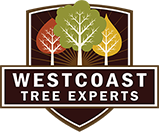Tree burls are mysterious, often eye-catching growths on tree trunks that have been the source of fascination for centuries. They are woody lumps or mounds that usually form on a tree’s trunk and limbs and can range in size from just a few inches to several feet across or more.
While they may look like tumors, tree burls actually form as part of a natural defense mechanism against disease and injury. That’s why Westcoast Tree Experts would like to explore the fascinating world of tree burls: what they are, how they form, and why they’re so interesting to study.
What is Tree Burl?
Tree burls are woody lumps or mounds that form on the trunks and branches of trees. They can vary significantly in size, shape, and color, depending on the age, species, and location of the tree. Tree burls are typically round or oval in shape but can also be irregularly shaped.
They often have a smooth texture and unique grain patterns that make them popular for use in furniture making and other decorative objects such as bowls and vases.
How Do Tree Burls Form?
Tree burls are formed when a tree responds to injury or disease by forming an overgrowth of cells at the site of damage. This process is known as cambium displacement, where new layers of cambium (the thin layer of cells that produces new wood and bark) are produced in response to external stimuli.
Tree burls result from this process, forming knots, lumps, or mounds on the tree’s trunk or limbs.
Why Are Tree Burls Interesting?
Tree burls are fascinating because they offer insight into a tree’s health and resilience. They can tell us whether a tree is stressed or diseased, as well as how it has responded over time to environmental changes such as drought or cold temperatures.
Tree burls also have practical applications for furniture makers and other craftspeople looking for unique materials with interesting grain patterns. The distinctive shapes and textures of tree burls make them ideal for use in furniture, vases, and other decorative pieces.
Tree burls are also fascinating because they often have a mysterious beauty that has captivated people for centuries. From ancient druids to modern-day woodworkers, tree burls have long been appreciated for their unique shape and texture.
Are Tree Burls Dangerous?
Tree burls are generally not dangerous, but they can pose a hazard to trees if left untreated. Burls can be infected with bacteria and fungi that can spread to other parts of the tree, leading to decay or even death of the tree.
It is important to monitor tree burls for signs of disease and take steps to protect the tree if necessary. This may include pruning away dead portions of the burl, using an insecticide spray, or treating it with fungicides.
How to Get Rid of Tree Burls?
If you want to get rid of tree burls, the best course of action is to work with a certified arborist who can assess the situation and recommend a course of treatment. In some cases, it may be necessary to remove the entire burl to prevent infection or decay from spreading.
In other cases, pruning away dead portions of the burl and treating it with fungicides or insecticides may be enough to contain any disease present. If you have questions about tree burls or need help getting rid of them, contact your local arborist for more information.
How to Hire the Best Arborist
Not all arborists are created equal, so it’s important to find one with experience and expertise in dealing with tree burls like Westcoast Tree Experts. Ask potential arborists for references and make sure they have proof of certification before hiring them.
You should also consider the types of services they offer, such as pruning, trimming, and removal of dead wood or growths. Make sure you get everything in writing so you know exactly what is included in your service agreement.
Contact Westcoast Tree Experts
If you need help getting rid of tree burls, contact Westcoast Tree Experts. Our certified arborists have extensive experience in dealing with all types of tree issues, including burls.
We offer a wide range of Folsom tree care services to keep your trees healthy and free from disease, such as pruning, trimming, stump grinding, and more. Contact us today by filling out our online form or call 1.800.767.8733 for more information about our services or to schedule an appointment.








